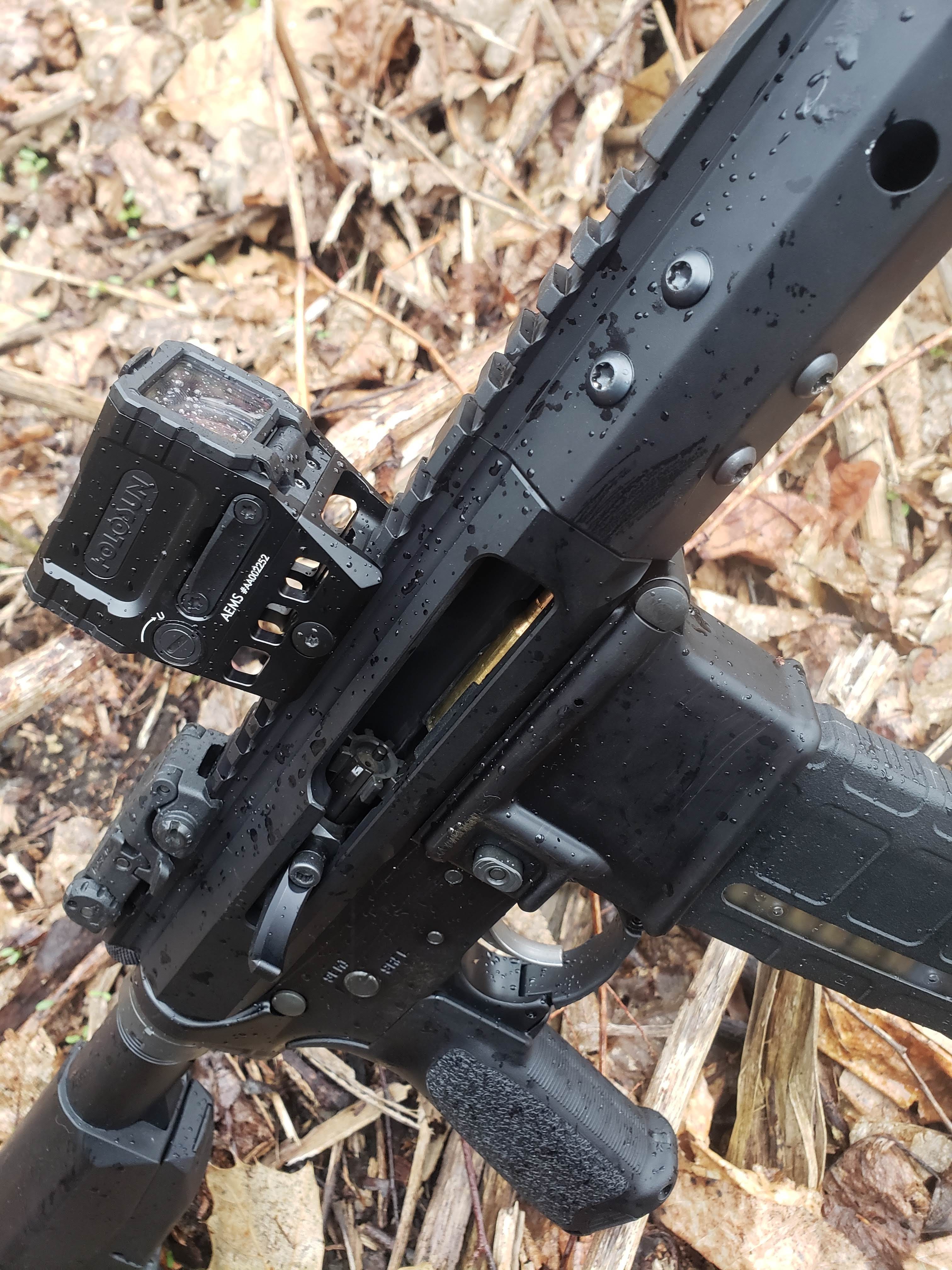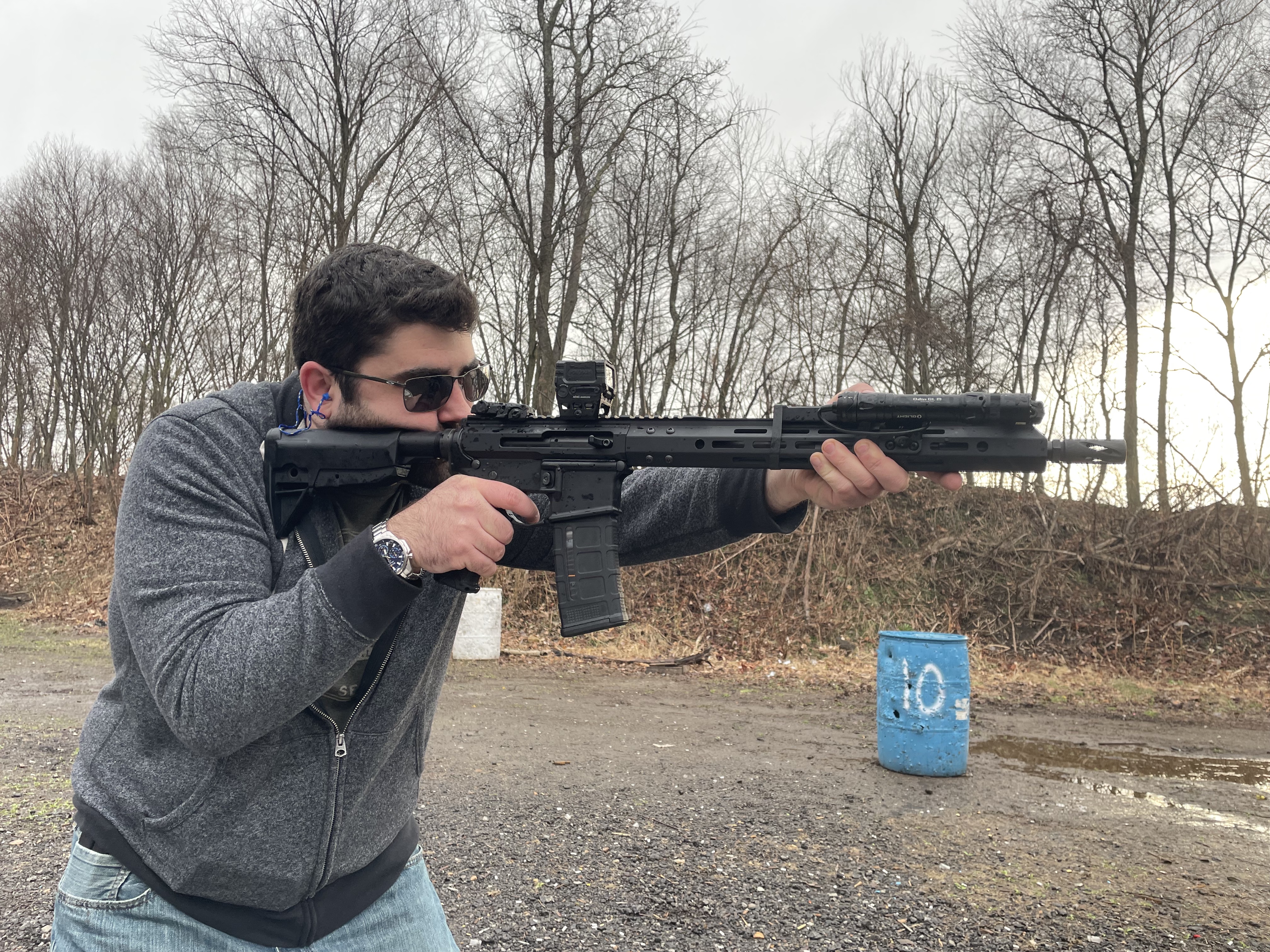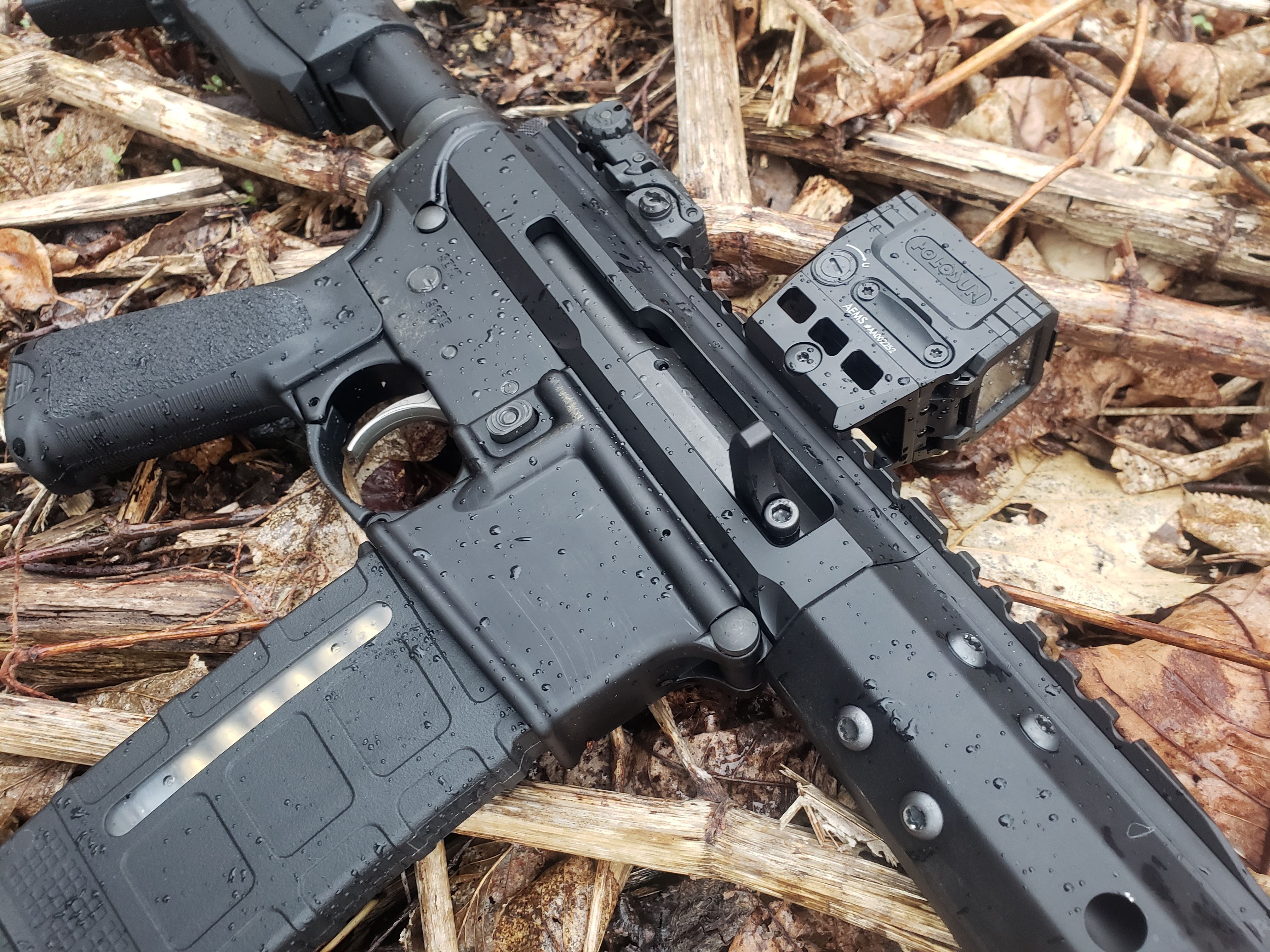

U.S.A. –-(AmmoLand.com)- The Bureau of Alcohol, Tobacco, Firearms and Explosives has a unique reputation among federal law enforcement agencies. Quite frankly, the ATF is well known for not always telling the truth. Whether its firearm statistics, after-action reports downplaying the body count of their latest sting to backfire or quotes from senior executives, any information coming from ATF is always suspect and must always be verified.
Verifying ATF information is not easy either. They put up a lot of roadblocks. The ATF ignores Freedom of Information Act (FOIA) requests, and its spokespeople rarely answer their phones or return emails. It’s as if the ATF doesn’t want the public to peek behind their curtain, because they too are scared of what will be found.
For example, one senior ATF official – Carlos A. Canino, former Special Agent in Charge (SAC) of the ATF’s Los Angeles Field Division – can be credited for jumpstarting the war on homemade firearms, so it is especially important to verify everything he has said. After all, last year the ATF announced notice of proposed rulemaking that could regulate many of the core components of homemade firearms. To be clear, Canino’s quotes caused all of this.
In 2020, activists from the propaganda arm of former New York City mayor Michael Bloomberg’s anti-gun empire asked Canino about the prevalence of homemade firearms in California. An earlier study said 30% of the guns recovered by ATF in California were unserialized “ghost guns,” but Canino said the real numbers were actually much higher. “Forty-one percent, so almost half our cases we’re coming across are these ‘ghost guns,’” Canino told the anti-gun activists. That was all it took. The entire gun-ban industry jumped on Canino’s statement like a duck on a June bug.
The war on homemade firearms had officially begun, and ATF’s Los Angeles SAC fired the first shots.
Unverifiable
Erik Longnecker likely will not have a long or prosperous career at the ATF. Longnecker, the program manager for the ATF’s Public Affairs Division’s Office of Public and Governmental Affairs, has a habit of returning emails from investigative reporters. This is rare and not exactly career-enhancing at the ATF.
In a lengthy email chain yesterday, I asked Longnecker to verify Canino’s comments and to add some context. Specifically, how many firearms did ATF’s Los Angeles Field Division seize? Did the 41% constitute five or six homemade firearms or were there hundreds or thousands.
To be clear, Longnecker was unable to verify Canino’s statement or add any context.
“I contacted the Los Angeles Field Division earlier today after your initial email, and their Public Information Officer was unable to verify any figures provided in 2019 by former-SAC Canino without knowing the time-period(s) he used for his comments,” Longnecker said in the email. “For that reason, we rely on verifiable data generally documented on our website or obtained through a FOIA request.”
Longnecker supplied statistics about the numbers of homemade firearms he claimed were recovered by law enforcement at possible crime scenes nationwide from Jan. 1, 2016, through Dec. 31, 2020, which were submitted to ATF for tracing – a total of 23,906 guns during the five-year period, or roughly 13 guns per day.
- 2016: 1,750
- 2017: 2,507
- 2018: 3,776
- 2019: 7,161
- 2020: 8,712
“I am not aware of any other verified PMF (Privately Made Firearm) data that has been published by ATF,” Longnecker wrote.
This is outrageous. The entire war on homemade firearms was based on alleged ATF data, which the ATF now claims it cannot verify. Civil rights are about to be violated, and gunmakers and firearm parts manufacturers are about to be put out of business, all based on spurious data from a former ATF official who the agency now appears to have disavowed.
Weaponized Data
“ATF does not label any firearm as a ‘ghost gun,’ but prefers to use the term ‘privately made firearm,” Longnecker explained during our correspondence Monday.
Whatever… No one seems to have told the Biden-Harris administration about the ATF’s preferred label. Like the anti-gun industry, the White House grabbed onto Canino’s comments and took off.
“In May 2021, the Justice Department’s Bureau of Alcohol, Tobacco, Firearms and Explosives (ATF) issued a proposed rule to help stop the proliferation of “ghost guns,” which are unserialized, privately made firearms that are increasingly being recovered at crime scenes and have been identified by law enforcement officials as a serious threat to public safety. Today, criminals are buying kits containing nearly all of the components and directions for finishing a firearm within as little as 30 minutes and using these firearms to commit crimes,” according to a White House Fact Sheet published last week, in the section titled: “Reining in the proliferation of ghost guns.”
The Chicago-Sun Times is the latest media outlet to glom onto the fact-free ghost-gun cavalcade, in an editorial titled “‘Ghost’ guns are a gift to criminals. It’s time to ban them.”
“Ghost guns are firearms purchasers assemble themselves without serial numbers, making them easy to obtain and hard to trace. Some are ‘printed’ on 3-D printers and include no metal, allowing owners to carry them through metal detectors undetected,” the paper’s editorial board wrote. Note: If some of their readers try to carry a “ghost gun” through a TSA checkpoint, they and the editorial board will likely be very surprised at the outcome.
The Chicago newspaper cited Canino’s fictional statistics and used the tired attempt at attribution – police say.
“Police say ghost guns are a growing problem,” the newspaper wrote. “Last year, they confiscated 455 ghost guns in Chicago. In 2019, law enforcement agencies recovered 10,000 ghost guns nationwide. In 2020, 41% of the ATF’s cases in Los Angeles were ghost guns.”
Police Don’t Say
None of the senior law enforcement officers I’ve interviewed about homemade firearms have said they’re a problem. Most haven’t seen any – not one. Several had their staff check their property rooms for homemade firearms recovered from crime scenes. None were found.
Several top cops accused the ATF of conflating homemade firearms with factory-made guns that have had their serial numbers illegally altered or removed, which could account for ATF’s high number of trace requests. I asked Longnecker about this. His response was somewhat vague:
“ATF investigates the criminal possession and other criminal misuse of both commercially manufactured and privately made firearms. These privately made firearms can be made from multiple sources and frequently lack serial numbers and other markings which generally make the firearms more difficult to trace,” he wrote. “ATF also investigates the criminal possession and other criminal misuse of firearms that have had serial numbers altered or obliterated. Firearms that have had serial numbers partially or fully obliterated usually have other markings that assist in the positive identification and tracing of the firearms. ATF uses this information to identify firearms trafficking patterns and related crimes.”
Takeaways
The war on homemade firearms – like the war on guns itself – is based on false claims, skewed statistics, faulty logic, and lashings of media hype. Both seek to demonize an inanimate object and punish legitimate gun owners for the sins of a few bad men. Whether you own a homemade firearm or not, we must all push back against what is an assault on our civil rights. Clearly, the gun-ban industry is using its bump stock template to target yet another legal product. Their move was expected, similar to their ongoing effort to ban pistol braces.
ATF’s role was expected too. They’re clearly assisting the anti-gunners by pumping up the number of tracing requests by combining homemade firearms with factory guns with altered serial numbers. How else could they claim “ghost guns” are a growing problem, right?
I have said before no one makes a better case to abolish the ATF than the ATF.
Then, as now, the country would be safer without them.
This story is presented by the Second Amendment Foundation’s Investigative Journalism Project and wouldn’t be possible without you. Please click here to make a tax-deductible donation to support more pro-gun stories like this.
About Lee Williams
Lee Williams, who is also known as “The Gun Writer,” is the chief editor of the Second Amendment Foundation’s Investigative Journalism Project. Until recently, he was also an editor for a daily newspaper in Florida. Before becoming an editor, Lee was an investigative reporter at newspapers in three states and a U.S. Territory. Before becoming a journalist, he worked as a police officer. Before becoming a cop, Lee served in the Army. He’s earned more than a dozen national journalism awards as a reporter, and three medals of valor as a cop. Lee is an avid tactical shooter.

Enjoy! Grumpy



The AR-15 is without question the single most popular sporting rifle in the United States today. It stands head and shoulders above any other weapon. In addition to being one of the most prolific weapons in the world, throw a stone at a gun store and odds are whoever it hits will have one. Throw a hundred stones and you’ll hit 95 people that own at least one AR-15 weapon platform. And while I don’t recommend throwing stones at people, I do recommend every gun owner have one. This popularity is spurred on by a few different factors, the modularity means you’re unlikely to see two people with identical rifles, it’s a bit like an adult erector set. The design also puts the recoil of the action directly in line with the bore, making it silly easy to stay on target. And with the US military employing the AR pattern since the Vietnam war, there is no shortage of parts, magazines or ammunition…..when there’s not a global pandemic raging of course. Today It’s easier to list the companies that don’t make an AR15 pattern rifle than those that do. So, in this flood of components and complete weapons, you really have to do something unique to stand out among the crowd. Bear Creak Arsenal has cranked it up a notch with their new GPX upper receiver.

Bear Creek Arsenal makes a selection of AR components that rivals other major manufacturers in terms of variety. One of these products stands almost unchallenged in the vast sea of the AR15. Bear Creek is one of the only companies that produces a Side Charging AR15 upper receiver. Which does away with the brass deflector, forward assist, and rear charging handle, all replaced by a charging handle attached directly to the bolt carrier. This design is highly intuitive, and certainly bears a resemblance to the mighty Kalashnikov in terms of user operation. The GPX adds another AK like feature to its list of accolades, Adjustable Piston Operation. The GPX is the first piston driven side-charging AR15 upper to come to market.

So, why is this anything to shout about? The intuitive nature of having one control for three functions is a good start. Aside from the obvious simplicity of operation, it also shaves weight off of the upper, which offsets the added weight of the gas piston system. That piston system also helps the rifle to run much cleaner than typical direct impingement systems, as well as cooler, as the hot gas no longer directly enters the receiver in order to make the thing function. Piston AR’s normally trade heavier weight for cleaner and more efficient operation. But in the case of the GPX, the extra weight isn’t there. Our upper is chambered in .223 Wylde, with a 16” barrel using a 1:8 twist meaning it should do well with both 55gr and 62gr 5.56mm loadings as well as most common .223 loads. Moving forward, the gas piston system is adjustable, making it a perfect candidate to run suppressed. It also comes with a 15” MLOK handguard with 7 sides for attachment, 4 QD sling mount points, and a shaved top section to ditch even more precious ounces. Even when we threw some gear we had in the office on the rifle and loaded it up with a full magazine, we had to keep reminding ourselves that this is a piston upper and not a DI gun, it really is that light.
Now that we’ve got all of the mechanical and aesthetic accolades covered, lets get to the meat of the subject. With all of these accolades going for it, do they all come together to make a good shooter? We added some MBUS irons, a Holosun AEMS optic, a handstop, and an Olight for good measure and headed to the range.

Admittedly, this would be the first time I’ve shot more than 10 rounds through a rifle since the Governor of our wonderful state said stay in your house for two weeks. Between the ammo prices and availability, it just wasn’t there for me. However, the rifle did perform with exceptional accuracy for the price point. The rounds went where I put them with our 1x test optic, and the reason a target isn’t posted is due to my own need to shake the rust off at 100yds. However, do not let the lack of target posted dissuade you from this upper. We fed it a mix of 55 and 62gr and it did produce as near as makes no difference equal groups with both loadings. But, what really surprised us was the utter reliability. Once we were done with accuracy testing, we decided to see just how well it would run. So, we fed it a diet of about 300 rounds of 55gr Wolf steel case ammo just to stack the odds against it. Wouldn’t you know it ate every single round, burped, and asked for more. And this is not post break in period, this is directly out of the box. No cleaning, no babying, nothing. We sighted it in, tested for accuracy, and tossed it out of the frying pan and into the fire. What we got was a 100% reliable result, which left us without any further words to think of. This thing will take the beating right out of the box.

What we have here in our hands is perhaps a game changer. It’s the first of its kind, it’s much more accurate than I am, it eats whatever is on the menu, and it’s posed to be more than affordable. What is not to like? Well if we were forced, there are two things. The first is that the adjustable gas system is not easy to access. I’d need a screwdriver over 12” long to switch the gas setting, or I’d have to remove the handguard. Given how well it comes adjusted from the factory, I wasn’t terribly worried about it. Secondly, in our testing the bolt did not lock back on the last round when using our Thermold 20 round magazine. We are chalking this up to the magazine as it locked open with every other magazine we tried, making it really a moot point.

The Bear Creek Arsenal GPX upper is one hell of a product. It has so many accolades to it that I’m not sure I can think of a reason not to have one. It shoots soft, it’s accurate, it’s dead reliable, it’s light, and it’s easy to kit out however you prefer to have it. The gas system being not the easiest to adjust is not something we lost any sleep over, and it did not affect our testing in any way. We will definitely recommend it to anyone looking for an upper that’s a bit different, and you can find yours at https://www.bearcreekarsenal.com/

